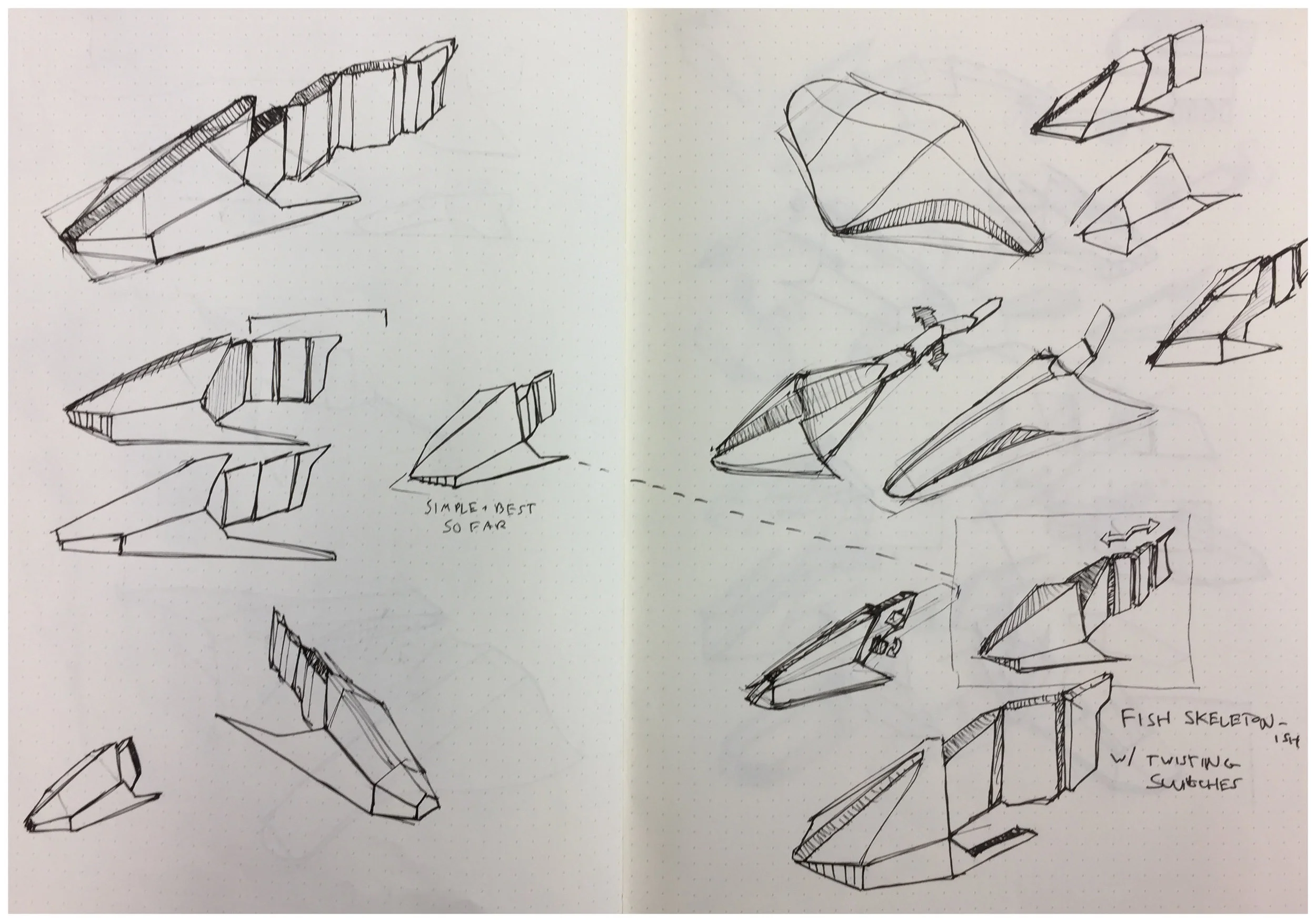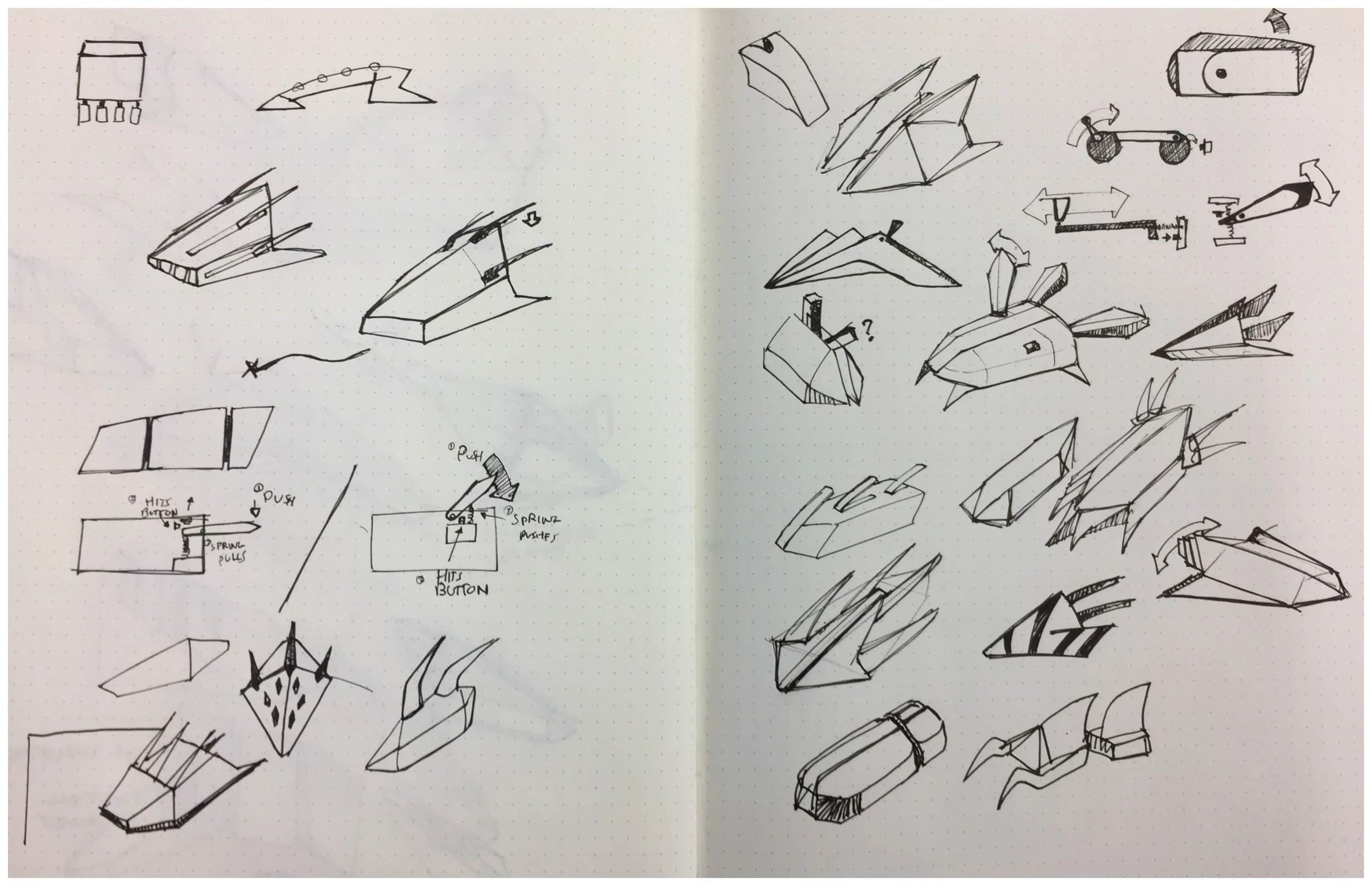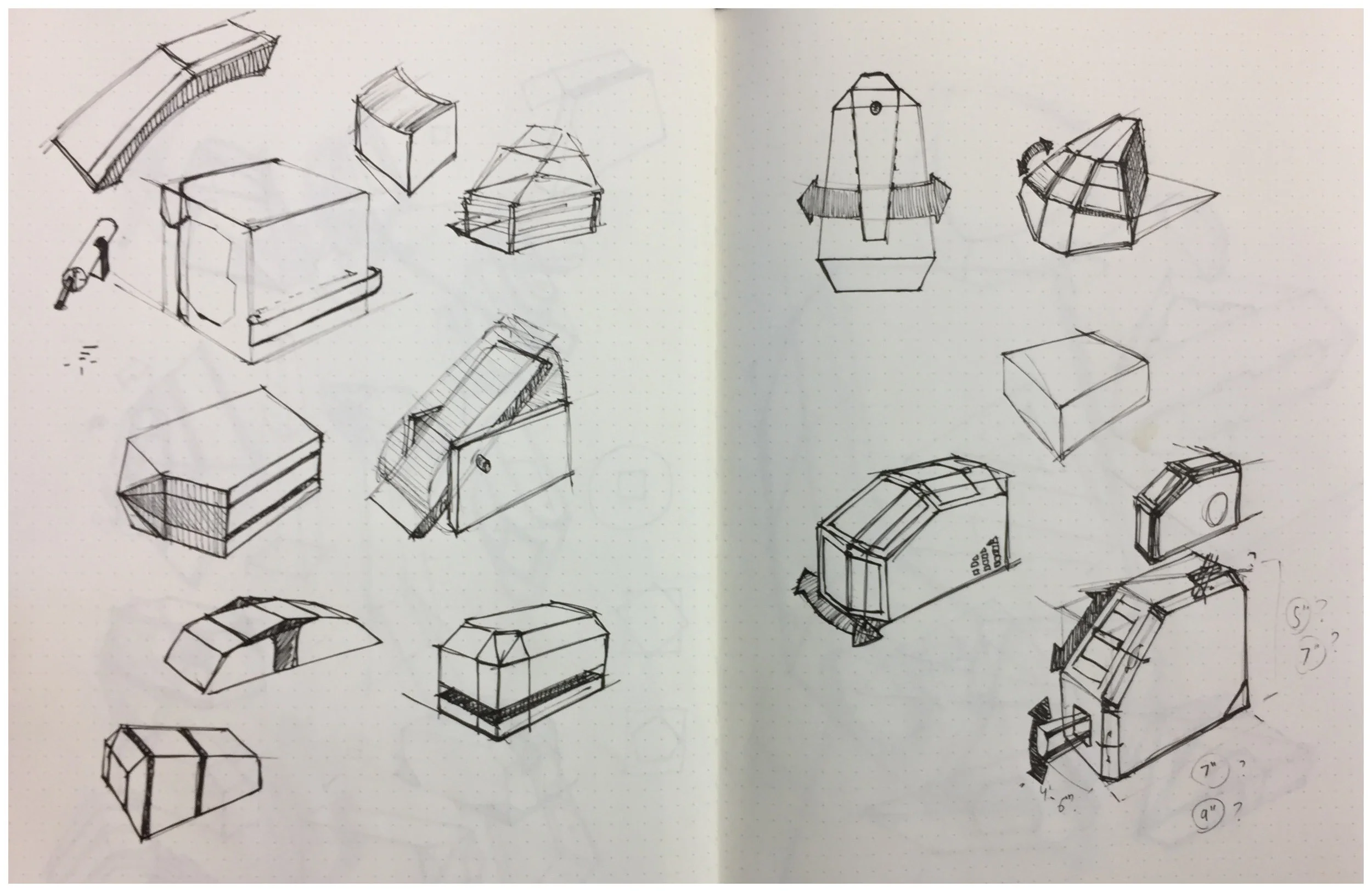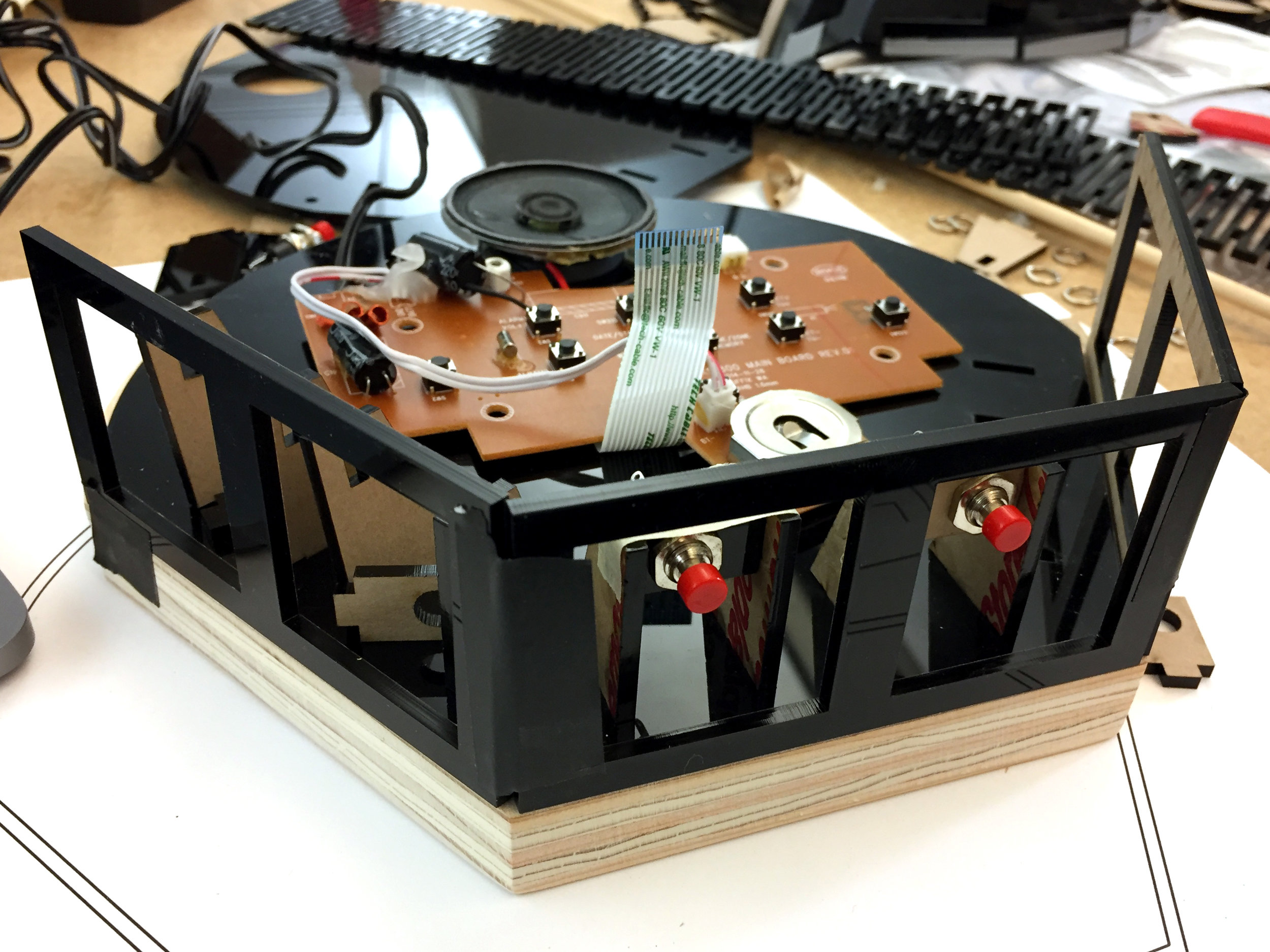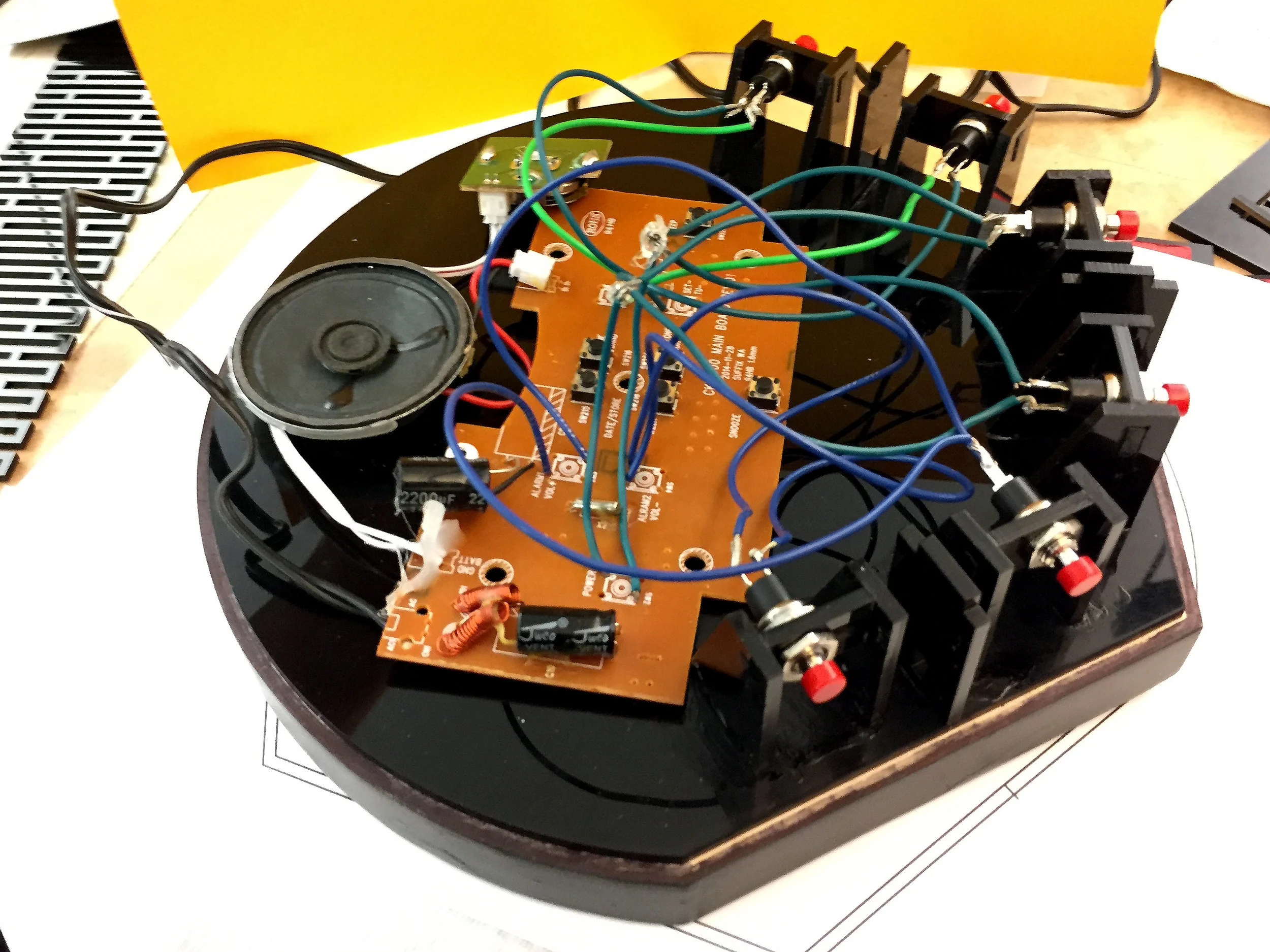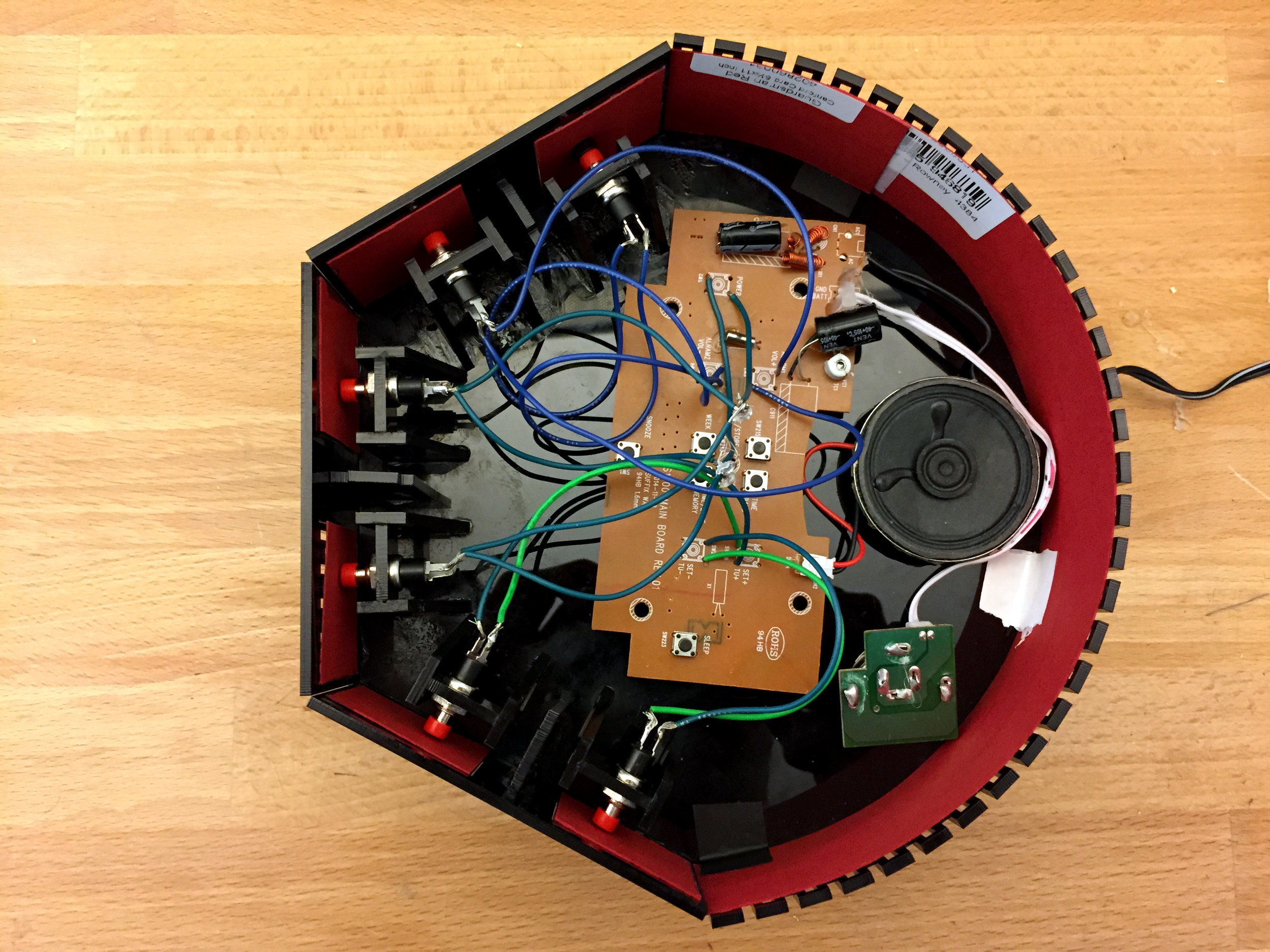PROJECT
Reworked Radio was focused on the relationship between interaction, form, and function. The project was to buy a cheap consumer radio, remove the electronics, and change its on/off, volume, and tuning functions into new interactions that were unexpected for a radio yet fit within the aesthetics of the design as a whole. In the course of the project, I had to consider the materials I had available and think of novel ways to use them in the radio’s construction, as well as solder the electronics and fit them within the unit’s shell.
PRODUCT
My radio is a sleek, minimal design, consisting of an acrylic shell on a wooden base. The full-black color scheme with red accents gives it an almost sci-fi feel, but I kept the profile low and the shape simple to avoid it becoming too ostentatious.
The radio’s most distinguishing visual feature and its engaging interaction come from the same material altering technique: a precise pattern of slots cut into a piece of acrylic. This process allows the acrylic to bend, which I used for the curved rear speaker grille as well as the flexible panels that activate the Radio’s on/off, volume, and tuning functions.
PROCESS
My original sketches for the radio were organic forms, mainly based on fish and insects. I liked the idea of manipulating the extremities of these shapes to activate the functions, but I concluded that the concepts were too complex. I pivoted sharply to polygonal shapes and mechanical input methods.
The biggest challenge of construction was fitting the electronics into the shell, a process that involved fitting the speaker into a cut-out hole and building mounts for custom buttons that I used to replace the original switches. All modifications done to the acrylic sides were made with a laser cutter, which gave the back and button panels their flexibility. The wooden base was simple, a piece of scrap shaped, sanded, and painted to give the radio a thick, solid base to ground its profile.

